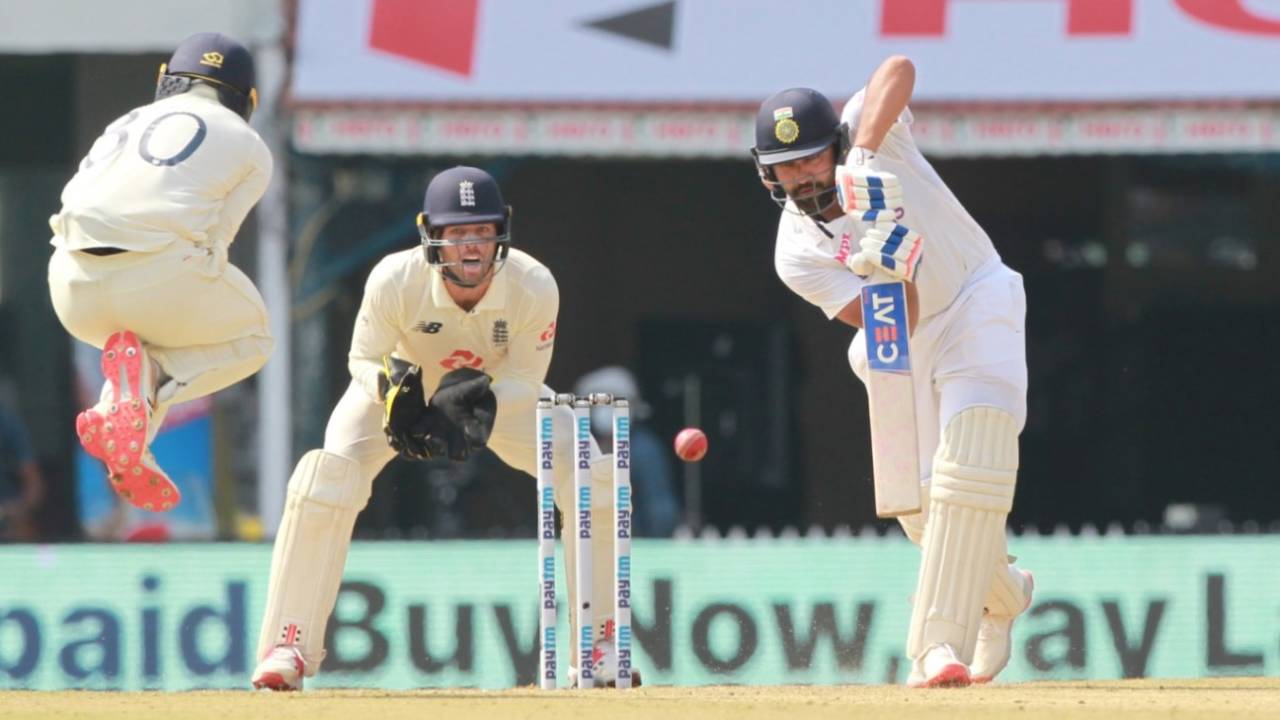Since his international path followed a slightly different trajectory from the norm - that is, he got a Test cap only after establishing himself in white-ball cricket - two hundreds in his first two Tests ought to have kick-started an equally promising Test career. His superior batting skills were there for everyone to see. It was only a matter of converting that white-ball form into Test runs, and he did that in style in his first couple of outings.
But unfortunately, that's not how his Test career panned out. He was in and out of the team frequently. In fact, the idea of making him open in Tests, like he did in white-ball cricket, was viewed as the last throw of the dice to revive his career.
It worked. So why wasn't it tried earlier? Also, more importantly, how is a batter who is considered somewhat loose suited to opening the innings in Test cricket?
Of course, his litmus test as an opener is ahead of him - in India's five Tests in England and three in South Africa, but let's look at the question about why he wasn't tried as an opener earlier.
Sharma's style of batting is really attractive and effective but it's also likely to give you the impression it is a little loose. His feet don't move much and he has been guilty of reaching out to balls with his hands but not moving his feet enough.
Still, can you blame him for playing like that? Scoring in white-ball cricket is all about staying away from the ball and allowing the hands to wield the bat freely. Moving your feet too much can slow you down, and you can't score double-centuries in ODI cricket if you are slow.
His ability to score lots of runs in white-ball cricket seemed to have pigeonholed him as a batter suited to the shorter formats. Every dismissal, attacking or otherwise, was regarded with cynicism and used to build the case that he didn't have Test match temperament. And to be fair, back then, that belief wasn't totally misplaced. And so the reluctance to try him at the top.
I remember writing myself about Sharma's struggle with understanding the rhythm of scoring in Tests. He would look like a million dollars - when does he not? - and then he would play a shot that would leave you scratching your head. You would wonder what made him play it when everything was going smoothly. Perhaps it was the fact that he wasn't playing any first-class cricket because of India's packed white-ball calendar.
So what has changed now? Or more specifically, has something changed in his Test batting?
Since he started opening in Tests, there has been a change in his batting. The front-foot stride has become a little longer and the hands are staying closer to the body. Though he didn't get a big score
in the World Test
Championship final, he made a sincere effort to modify his game to suit the conditions in both innings. Even while the front-foot stride was significantly longer, he didn't look to play through the line or on the up. He defended patiently off the front foot, waiting for the ball to be really full or short, and then he cashed in.
Shot-making is at the core of Sharma's batting, and so balancing caution and aggression is a tightrope walk for him; too much of either can spell trouble.
I really enjoyed his approach in Chennai, which was, arguably, one of the most difficult pitches to bat on on day one. For someone as skilful (I'm avoiding the word "talented" here on purpose) as Sharma, there must be an inherent desire to hit your way of trouble. That tends to work very well in white-ball cricket because if you win that battle, you win the war - for that battle is the war in limited-overs cricket. But Test cricket follows a different pattern and it looks like Sharma is willing to change tack to suit its demands.
Will he never play a loose shot again? He probably will, but when he does, nobody will be passing a verdict on his Test career in a rush. And that will help.
Only time will tell whether he will score runs in England and end the debate about his efficiency as a Test opener overseas, but going by the evidence of his recent outings, it's fair to assume he'll give it a good shot.
Former India opener Aakash Chopra is the author of three books, the latest of which is The Insider: Decoding the craft of cricket. @cricketaakash
